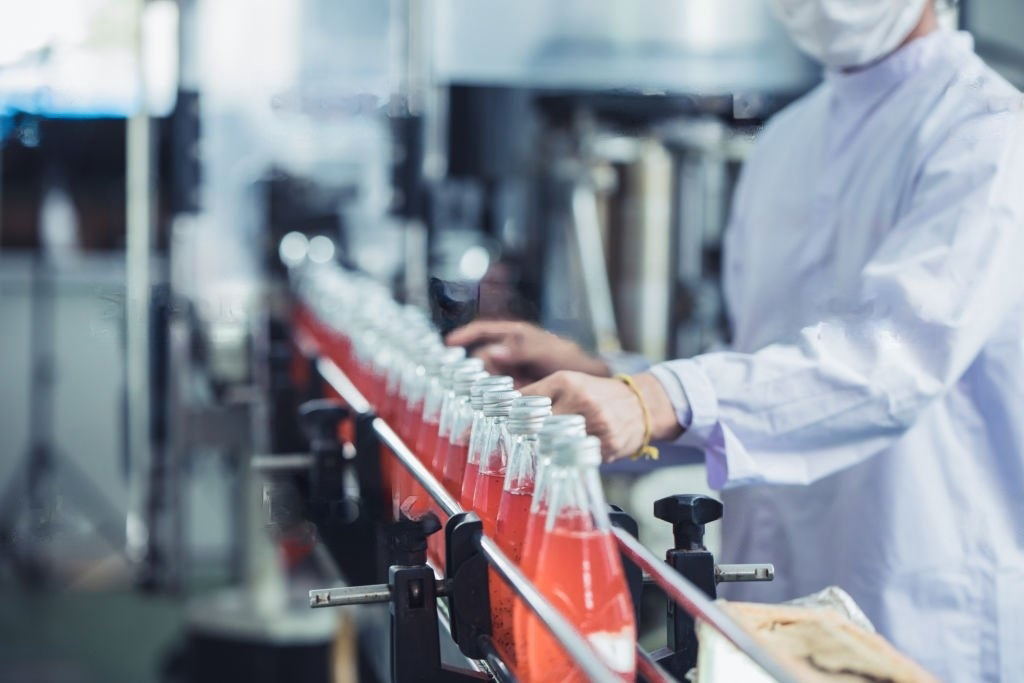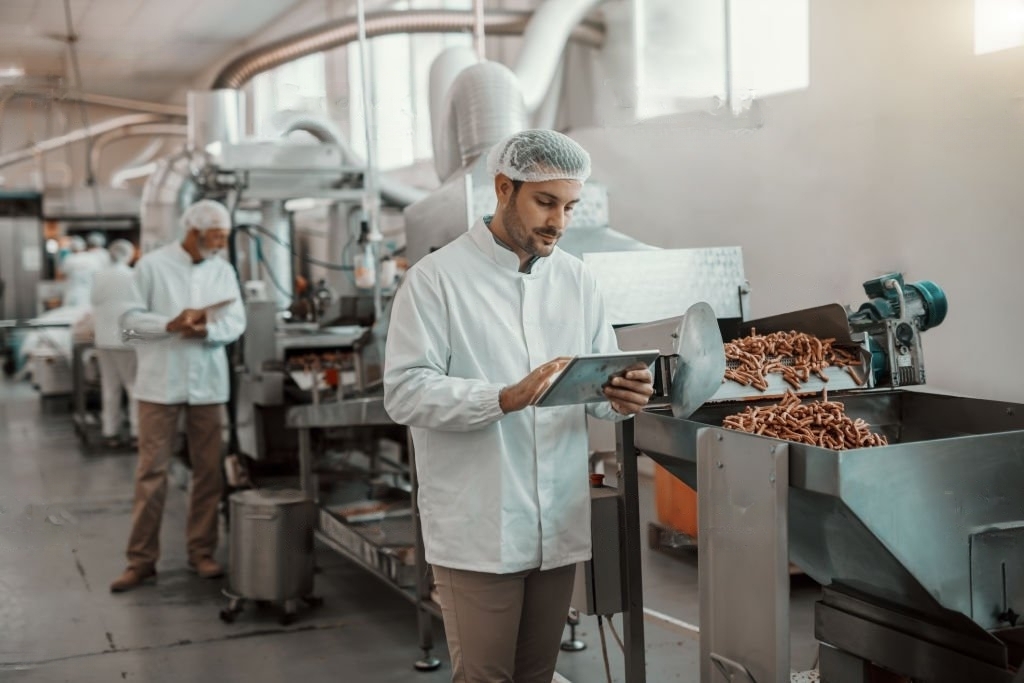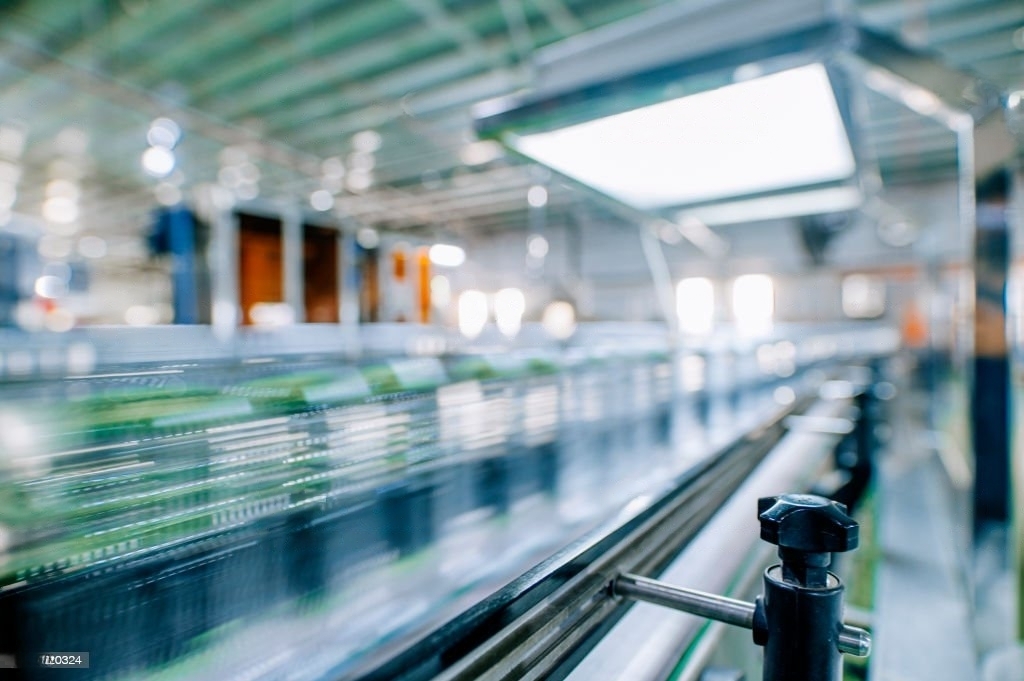This article is part of a series dedicated to exploring food technologies.
Author: Nassab Atwi
Contributing Editor: Samar Yammine
In this fast-paced and ever-evolving world of agri-food production, embracing new technologies for sustainable food production is the key to success. From High-Pressure Processing to Precision Fermentation and 3D Food Printing, these cutting-edge methods promise safer, more nutritious, and tastier products for consumers worldwide, and contribute to sustainable development. Explore the possibilities offered by nanotechnology, Cold Plasma, and Ultrasound Technology, and get ready to revolutionize the way you produce, preserve, and enjoy food. Embrace the future and join the food revolution today.
1. Harnessing the Power of High Pressure: A Path to Safer and More Nutritious Foods

High-Pressure Processing (HPP) is transforming the food industry by effectively killing harmful microorganisms and enzymes without using high heat. The innovative non-thermal technology preserves nutritional value, flavor, and texture, creating products that closely resemble their natural counterparts. Its prime application is pasteurizing liquid foods to extend shelf life, with fruit juice being a shining example. HPP is also used in the production of mozzarella.
Zoom-in On Science:
High-pressure processing (HPP) is a novel non-thermal food processing technology that has gained recognition for its ability to inactivate microorganisms and enzymes in food using high pressures while maintaining room temperature. HPP involves subjecting sealed food products to elevated pressures ranging from 300 to 600 megapascals (MPa) with a holding time of 1-5 minutes, which effectively kills or inactivates pathogens, spoilage organisms, and enzymes without the need for high heat (Wu et al., 2022).
Unlike thermal processing, HPP minimizes the loss of nutritional value, color, texture, and flavor, resulting in products that closely resemble their untreated counterparts. One significant application of high-pressure processing is its use for pasteurization to extend the shelf life of liquid foods such as fruit juices, particularly those with a low pH where spores cannot thrive (Soltani Firouz et al., 2021).
2. Electrifying Your Food: Pulsed Electric Field for Enhanced Preservation and Extraction
Pulsed Electric Field (PEF) is a cutting-edge non-thermal food processing technology that sterilizes and preserves food by disrupting cell membranes. PEF improves food preservation and enhances extraction processes, leading to increased efficiency and better product quality. It has surprising effects on meat tenderness, and it has the potential for revolutionizing various food production methods.
Zoom-in On Science:
Pulsed Electric Field (PEF) is an advanced non-thermal food processing technology that involves the application of short, intense bursts of electrical energy to food products. PEF can effectively sterilize food by disrupting the cell membrane structure through electroporation (Arshad et al., 2020).
PEF has been employed to deactivate various microorganisms and spoilage enzymes, leading to improved food preservation. Additionally, PEF technology has enhanced the efficiency and output of extraction processes, including the extraction of sugar from beetroot, juice from grapes or apples, and bioactive compounds. Furthermore, applying PEF to beef muscles has resulted in improved tenderness (Wang et al., 2023).
3. Nano-Sized Solutions: Nanotechnology’s Big Impact on Food Safety and Quality

Unravel the potential of nanotechnology in the food industry, from ensuring food safety and traceability to improving packaging and nutrition. Nanosensors are becoming crucial tools in detecting even the tiniest traces of pollutants, viruses, and bacteria in food systems, safeguarding consumers, and enhancing overall food quality.
Zoom-in On Science:
Nanostructured material refers to materials that have an intermediate size between 1 and 1000 nanometers and can be processed into different forms. Nanotechnology has a range of applications in the food industry such as food safety, packaging, nutrition, and quality (Aggarwal & Idrishi, 2023).
One of the nanotechnology applications is nanosensors. Nanosensors play a crucial role in food safety and food traceability. These devices can measure physical quantities even in minute amounts such as chemical pollutants, viruses, and bacteria present in food systems, and convert them into detectable signals for analysis (Sahani & Sharma, 2021).
4. Precision Fermentation: Crafting the Future of Food Ingredients with Microbial Magic
Step into the realm of Precision Fermentation, a groundbreaking technique that produces animal-free dairy proteins, egg proteins, and other essential ingredients, shaping the future of sustainable and ethical food production. Precision Fermentation uses genetically modified microorganisms to create specific proteins and compounds with utmost precision and efficiency.
Zoom-in On Science:
Precision fermentation refers to optimized fermentation processes that involve the production of specific proteins, ingredients, or compounds (enzymes, proteins, lipids, carbohydrates, antioxidants…) using microbial fermentation (Aro et al., 2023). It utilizes genetically modified microorganisms or precision-engineered fermentation processes to produce target molecules with high precision and efficiency. One example of precision fermentation is the production of animal-free dairy proteins such as milk whey and egg proteins using microbial fermentation (Chai et al., 2022).
About the Authors:
Nassab Atwi is currently pursuing her graduate studies at the prestigious American University of Beirut (AUB) with a specialization in Food Technology. Armed with a bachelor’s degree in biology from Lebanese University, Nassab’s diverse academic background provides her with a unique perspective when tackling the challenges of food technology. Her cross-disciplinary approach allows her to explore connections between biology and food science, opening new avenues for research.
Samar Yammine is a Senior Program Officer at Berytech and leading the SME Department’s Programmatic Support Unit. She holds a bachelor’s degree in chemical engineering and is pursuing her studies in Energy Management. She is a passionate researcher on the subjects of water, wastewater, and energy management. With a solid foundation in engineering principles and problem-solving, her interests expand to processing, innovation, digital marketing, entrepreneurship, and artificial intelligence.
Sources
Aggarwal, D., & Idrishi, R. (2023). Nanotechnology applications for food traceability. Nanotechnology Applications for Food Safety and Quality Monitoring, 457–472. https://doi.org/10.1016/b978-0-323-85791-8.00011-2 =
Aro, N., Ercili-Cura, D., Andberg, M., Silventoinen, P., Lille, M., Hosia, W., Nordlund, E., & Landowski, C. P. (2023). Production of bovine beta-lactoglobulin and hen egg ovalbumin by Trichoderma reesei using precision fermentation technology and testing of their techno-functional properties. Food Research International, 163, 112131. https://doi.org/10.1016/j.foodres.2022.112131
Arshad, R. N., Abdul-Malek, Z., Munir, A., Buntat, Z., Ahmad, M. H., Jusoh, Y. M. M., Bekhit, A. E.-D., Roobab, U., Manzoor, M. F., & Aadil, R. M. (2020). Electrical systems for pulsed electric field applications in the food industry: An engineering perspective. Trends in Food Science & Technology, 104, 1–13. https://doi.org/10.1016/j.tifs.2020.07.008
Chai, K. F., Ng, K. R., Samarasiri, M., & Chen, W. N. (2022). Precision fermentation to advance fungal food fermentations. Current Opinion in Food Science, 47, 100881. https://doi.org/10.1016/j.cofs.2022.100881
Sahani, S., & Sharma, Y. C. (2021). Advancements in applications of nanotechnology in global food industry. Food Chemistry, 342, 128318. https://doi.org/10.1016/j.foodchem.2020.128318
Soltani Firouz, M., Mohi-Alden, K., & Omid, M. (2021). A critical review on intelligent and active packaging in the food industry: Research and Development. Food Research International, 141, 110113. https://doi.org/10.1016/j.foodres.2021.110113
Wang, Y., Sha, K., Guo, X., Chen, J., Chen, Q., & Jiang, F. (2023). Optimization and simulation of pulsed electric field treatment chamber for food sterilization. Food Science and Technology, 43. https://doi.org/10.1590/fst.126022
Wu, C.-P., Wu, S.-M., Lin, Y.-H., Wu, Y.-H., Huang, B.-C., Huang, H.-W., & Wang, C.-Y. (2022). High pressure processing-based hurdle strategy for microbial shelf life of packed food in the cold chain. Food Packaging and Shelf Life, 34, 100983. https://doi.org/10.1016/j.fpsl.2022.100983





